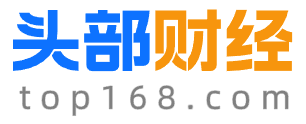
cfp
AsianFin -- just weeks after a dramatic collapse in China-U.S. shipping volumes triggered by new Trump-era tariffs, trade lanes are roaring back to life—faster than anyone expected.
In April, container traffic from China to the Port of Long Beach all but evaporated overnight, plunging the world's busiest trade route into near standstill. But following a joint economic statement between Beijing and Washington on May 12, the situation has flipped: demand for China-to-U.S. shipments has skyrocketed, booking platforms are flooded, and export terminals are racing to keep up.
"It's overwhelming—simply overwhelming," said Lin Risheng, duty manager at Shenzhen's Yantian Port. "I went through two walkie-talkie batteries today coordinating with crane operators."
Yantian handles over a quarter of China's exports to the U.S., and it's now operating at full throttle. But the surge isn't isolated. Logistics companies nationwide are reporting massive spikes in booking volumes. At Ningbo Port, U.S.-bound container reservations jumped from single digits to nearly 4,000 within 24 hours of the policy shift.
The rapid reversal follows a historic low. On May 9, not a single ship had departed from China to either of the two major West Coast U.S. ports—Long Beach or Los Angeles—a first since China began shipping to the U.S. in the early 1980s. Even at the height of the pandemic, vessel traffic never fell to zero.
But by mid-May, the market rebounded. According to global shipping data platform Vizion, bookings for China-U.S. shipments surged nearly 300% compared to previous weeks. All slots for U.S.-bound routes were sold out by the end of May.
"Ports are urgently redeploying vessels from Southeast Asia and Europe to handle the overflow, but there's still a 30% shortfall in capacity," said Wu Hui, a logistics manager in Zhejiang.
Factories and logistics firms across China are now running around the clock.
In Ningbo, Hande Electric's automated refrigerator line is at full tilt. "Our U.S. clients called the moment the statement was issued—they wanted production and shipments scheduled immediately," a company spokesperson said.
In Shanghai, a knitting factory completed 50,000 pieces within 48 hours and sold through 300,000 garments in stock. In Yiwu and Shenzhen, export firms report U.S. orders rising sharply year-on-year.
But the rush hasn't just boosted sales—it has reignited confidence.
For U.S. ports, the initial impact of tariffs was devastating. "Nothing has been delivered at all," lamented Ryan Calkins, commissioner at the Port of Seattle. "Drivers are losing money and going bankrupt."
Port of Long Beach CEO Mario Cordero issued a stark warning: "If things don't change quickly, we may see empty shelves within 30 days."
Even major U.S. retailers are on edge. Executives from Walmart, Target, and Home Depot reportedly met with Trump behind closed doors in late April, cautioning: "If this continues, shelves will look like they do after a hurricane by Thanksgiving."
Despite Washington's efforts to diversify supply chains, American businesses have found it nearly impossible to pivot away from China.
A Los Angeles buyer recently explored alternatives in Southeast Asia—only to return to Chinese factories after struggling with delays and quality issues. "They just couldn't read the blueprints," said Xiong Weiping, a factory manager in Zhejiang.
Even Boeing, once a symbol of U.S. industrial prowess, has struggled with labor shortages and drug-related incidents among workers.
And while the U.S. struggles to reshore or relocate manufacturing, Chinese companies are expanding their reach. At Mingrui Group in Guangdong, U.S. sales now account for just 30%—down from 70%—thanks to booming demand in Europe.
In 1930, the Smoot-Hawley Tariff Act raised U.S. tariffs to 59%, triggering a global retaliation spiral and deepening the Great Depression. Over 1,000 economists warned against the move—but were ignored.
Now, economists are warning the same thing: protectionism hurts everyone.
As Dartmouth's Douglas Irwin put it: "We need 21st-century solutions, not a repeat of the 1930s."






 京公网安备 11011402013531号
京公网安备 11011402013531号